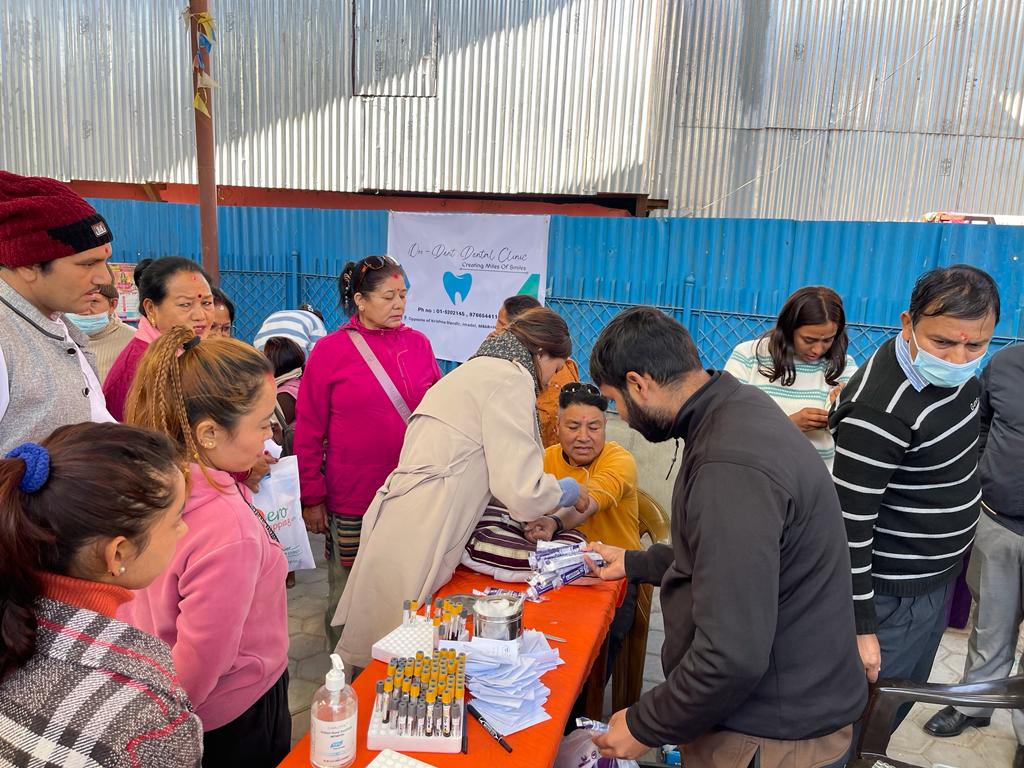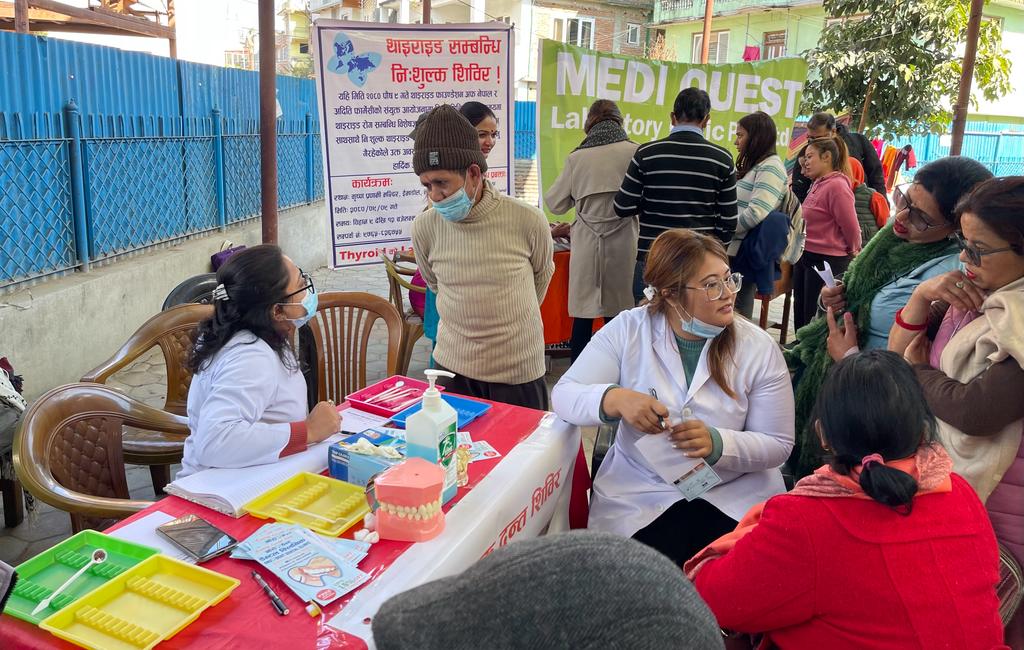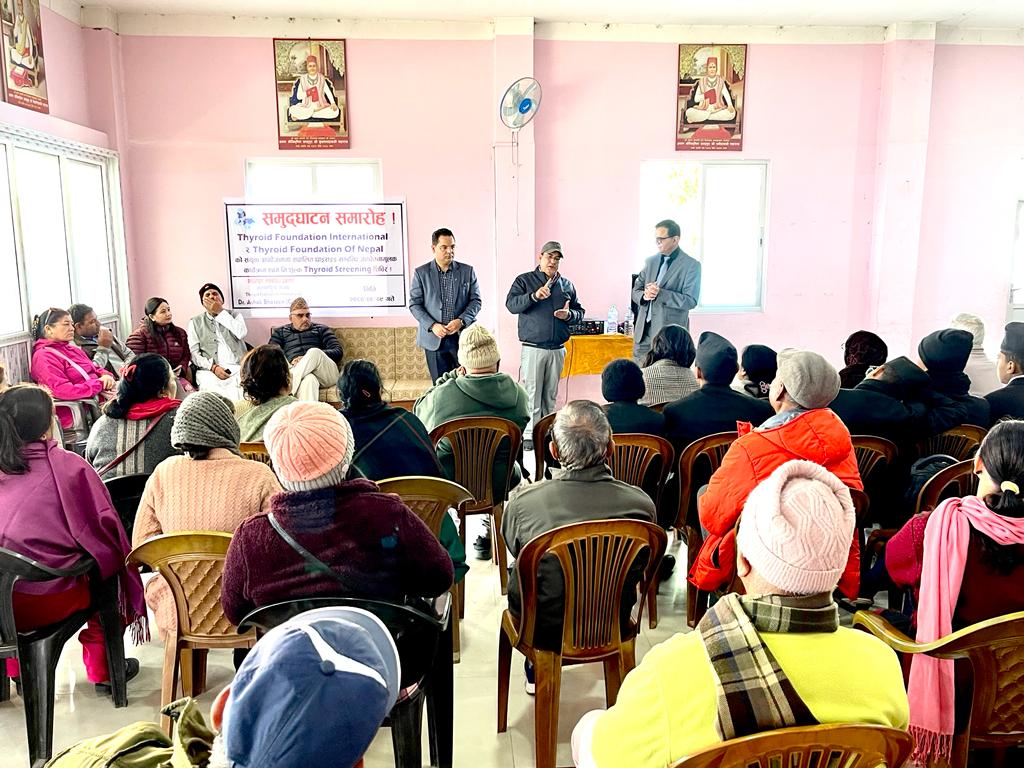
Nepal is one of those countries that are considered to be an endemic area with rising cases of iodine deficiency including disorders like thyroid imbalance, goitres, and (hypo- and hyper-) thyroiditis.
With Nepal being one of the key countries of interest, Thyroid Federation International in close collaboration with its Nepal chapter the Thyroid Foundation of Nepal recently conducted a health camp to test the prevalence of thyroid in a sample group in Nepal.
The sample results show that thyroid and related cases are of growing concern and Nepal needs to focus and invest in its control. Here is all you need to know about thyroid in Nepal.
Trend of thyroid cases

The thyroid, a butterfly-shaped gland nestled in the neck, regulates crucial bodily functions. The global prevalence, estimated at three to four per cent, showcases the widespread impact of thyroid disorders.
According to Ashok Bhaseen, President of the Thyroid Federation International since 2011, “Out of 100 people in a room, three to four people and one in eight women will have this problem. Mostly 80 to 85 per cent of the cases are reported in females. Hypothyroidism, out of all thyroid problems, also reports being about 80 per cent.”
Under the umbrella of problems caused by an imbalance of thyroid levels, the emerging problems include hypothyroidism, hypothyroidism, thyroid cancer, goitre, medullary cancer, Graves’ Orbitopathy, Hashimoto’s (also MCT8), congenital hypothyroidism, where children are born without T4 or high levels of (TSH),

Uncertainties persist regarding the rising rates of thyroid cancer—whether due to heightened awareness, improved diagnostics, or actual increases in occurrences—prompting ongoing research and analysis.
“It could also be more exposure to radiation or X-rays,” he says, adding, “Nepal does have cases of thyroid problems. One of the contributing factors is the use of Himalayan salt or diet with less iodine in them. Genetics is another factor. It is an autoimmune disease, so the body is attacking your thyroid thinking it is a foreign entity.”
Understanding these unique challenges is pivotal in tailoring targeted interventions and healthcare strategies for these regions, suggests Bhaseen, who is also a pharmacist and an entrepreneur by profession.
Significance of health camps

The significance of health camps is in diagnosing and creating awareness about thyroid disorders. There have been many health camps held across the world. In Nepal, there have been screenings so far. But for the first time, it organised a health camp.
Thyroid Federation International operates in 40 countries, including Nepal. On December 25, they jointly organised a free health camp for thyroid screening in Lalitpur.
Of the 200 people who reached the health camp, 150 samples were tested in the lab. Of that, the Thyroid Foundation of Nepal informed, 37 reportedly had hormonal imbalance, 21 had hyperthyroidism and 15 reported having hypothyroidism.
They will now jointly organise annual health camps here and track those who tested positive for problems related to the thyroid, providing them with free medicines and treatment. Meanwhile, they will expand their screening range with more camps in varied locations.
The health camps prove to be beneficial to raise awareness, he says.
“Because education and awareness are the key to our success, one of the cornerstones of what we do. Nepal has to focus on education and awareness. But it has to go from Kathmandu to other places also.”
Steps to awareness: Thyroid in Nepal
The recent health camp for screening thyroid in Nepal highlighted the need for broader educational initiatives beyond urban centres. Bhaseen says, “If you ask anybody about the thyroid gland, they don’t even know it exists or where it exists. And the same is the case in many, many countries. You don’t even know the gland exists until you have a problem.”
“There are a lot of things that are regulated by the TSH, T3, and T4 levels in the body. So, it does play a crucial role as it controls your metabolism and impacts conception, pregnancy and baby’s health. It controls the heartbeat and one’s intelligence,” he insists.
According to President Bhaseen, to control thyroid issues in Nepal there needs to be a compulsory screening after birth for thyroid, within the first three to four weeks.
“If the child is born without the thyroid gland, then the levothyroxine supplement has to be done for better brain development. Other issues that might be observed include bow-leggedness and a mongolite face.”
Extending these programs to remote regions emerged as a crucial strategy to ensure equitable healthcare access and awareness. “Nepal needs to develop local associations in different provinces and work along with endocrinologists and pharmacies so that more people in need can benefit,” he suggests.
Symptoms of thyroid disorders
Thyroid has one of the often-overlooked symptoms, showcasing the complexities of the illness. How thyroid disorders manifest differently based on gender. Keeping thyroid disorders in control underscores the importance of recognising subtle but substantial changes in one’s health.
- You start losing hair.
- Your skin becomes dry.
- Change in heartbeat
- You start feeling suddenly very cold or hot.
- Change in the menstrual cycle.
- Experience constipation
- Influences metabolism–weight gain or weight loss.
With a simple blood test, one can check their TSH levels, T3, and T4 levels. The test for thyroid in Nepal costs about Rs 800 per person.
Treatment for thyroid in Nepal

Thyroid disorders, manageable with early diagnosis and treatment, underscore the need for heightened education, awareness, and consistent healthcare initiatives.
Until 1957, the primary treatment for thyroid issues involved the use of pig desiccated thyroid. However, with the advent of synthetic Levothyroxine, which includes medications like Synthroid and Eltroxin, there was a significant shift. In Southeast Asian countries, the recognition and availability of these treatments have emerged more recently. Levothyroxine has become the most commonly prescribed product in this context.
There is no precaution. The awareness is very high about iodine levels in developed countries so they are getting cautious in their diet. Bhaseen says to control cases of thyroid in Nepal, one can replicate the same, “There’s no magic food or medicine for this. But, in some coastal regions, fish and their diet, naturally contain more iodine. So that is good. But a lot of fruits and vegetables also contain iodine.”
To control thyroid issues in Nepal, Bhaseen reiterates timely screening is a must.
“Please don’t perceive it as ageing or mere fatigue. Don’t take these matters lightly. Seek medical help and get checked. If you’re dissatisfied with one piece of advice, consider exploring a second or even a third,” he says.
But, once you are diagnosed, he suggests being calm as the thyroid levels are controllable and one does not have to worry. “When diagnosed, one has to just continue the medications all their life. It should be taken at least two hours before drinking or eating anything,” he adds.
Also, highlighting one of the key mistakes people make, he advises not to switch the medicines, “If you start with medicines that company A manufactures, you cannot switch it at the pharmacy for company B. Otherwise, you’ll go back again six months after your treatment. You have to start all over again. Neither pharmacists nor doctors are aware of this problem.”




















